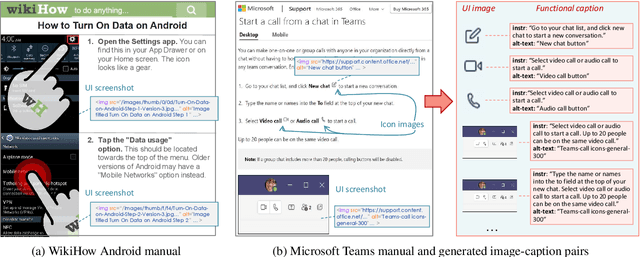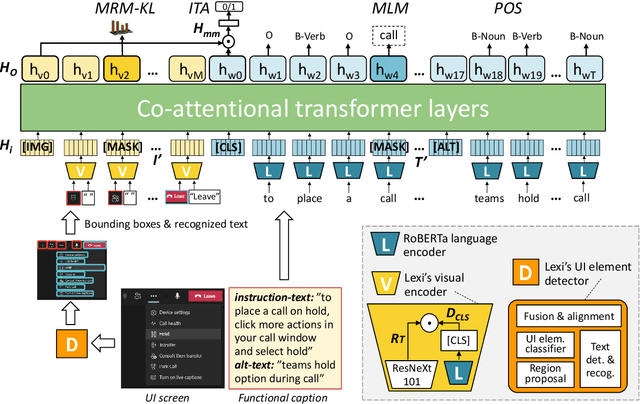Lexi: Self-Supervised Learning of the UI Language
Paper and Code
Jan 23, 2023



Humans can learn to operate the user interface (UI) of an application by reading an instruction manual or how-to guide. Along with text, these resources include visual content such as UI screenshots and images of application icons referenced in the text. We explore how to leverage this data to learn generic visio-linguistic representations of UI screens and their components. These representations are useful in many real applications, such as accessibility, voice navigation, and task automation. Prior UI representation models rely on UI metadata (UI trees and accessibility labels), which is often missing, incompletely defined, or not accessible. We avoid such a dependency, and propose Lexi, a pre-trained vision and language model designed to handle the unique features of UI screens, including their text richness and context sensitivity. To train Lexi we curate the UICaption dataset consisting of 114k UI images paired with descriptions of their functionality. We evaluate Lexi on four tasks: UI action entailment, instruction-based UI image retrieval, grounding referring expressions, and UI entity recognition.
 Add to Chrome
Add to Chrome Add to Firefox
Add to Firefox Add to Edge
Add to Edge